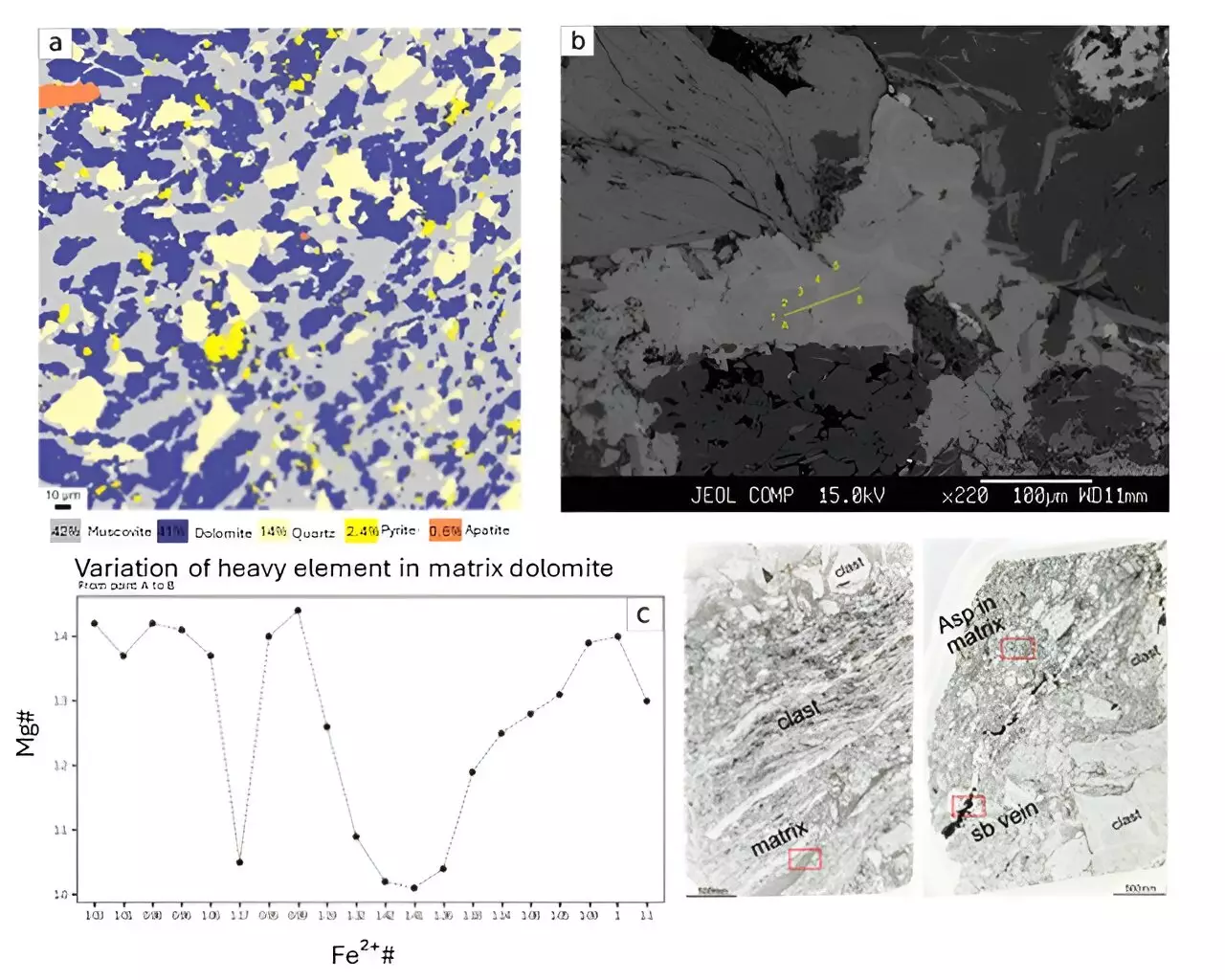During a recent research expedition to the Ichinokawa Mine in Ehime prefecture, Noriyoshi Tsuchiya, an esteemed professor, stumbled upon a remarkable find amidst the dazzling stibnite crystals. While most would be captivated by the gleaming crystals, Tsuchiya found himself drawn to a sedimentary rock formation known as breccia. This seemingly ordinary rock bundle held within it a hidden treasure – a story of past earthquakes etched in its layers. Tsuchiya’s fascination with the breccia led to a series of discoveries that shed light on the seismic history of the region.
Just as the rings of a tree trunk reveal its age, rocks like breccia hold valuable insights into the geological history of an area. The Ichinokawa breccia, in particular, serve as a unique repository of information about the frequent seismic activities along the Median Tectonic Line (MTL) in southwest Japan. Stretching over a thousand kilometers, the MTL is a significant fault line that experiences regular seismic events. This makes the breccia formed in this region a subject of great interest for researchers seeking to understand past earthquakes.
In a meticulous study conducted by Tsuchiya and their research team, the fragmented rocks were examined both in the field and in the laboratory. Thin sections of the breccia were extracted and studied under a microscope to unravel their secrets. The findings of this comprehensive analysis were published in Scientific Reports, revealing groundbreaking insights into the energy dissipated by past earthquakes. Through statistical and fractal analyses of angular deformations and rock textures, the team was able to estimate the energy released during seismic events.
One of the key discoveries of the study was the identification of carbonates such as CaMg(CO3)2 within the breccia. The presence of these minerals, which were not present in the original host rock, indicated a complex process of mineral formation post-earthquake activity. It was deduced that the breccia was not formed in a single seismic event but rather through a series of repeated earthquakes that pulverized the rocks into finer particles. The analysis suggested that the Ichinokawa breccia had undergone the effects of 10 to 100 earthquakes, with a moment magnitude ranging from 5.8 to 8.3.
The findings of this study challenge existing seismic models that rely primarily on hydrofracturing theories. By adopting a multi-disciplinary approach that considers various factors influencing earthquake processes, Tsuchiya and their collaborators offer a new perspective on the seismic history of the region. This collaborative effort between academia and research institutions may revolutionize our understanding of coseismic energy budgets in earthquake-prone areas.
The exploration of the Ichinokawa breccia rocks has unearthed a wealth of information about the seismic past of the region. Through meticulous analysis and innovative research methods, Tsuchiya and their team have pieced together a narrative of repeated earthquakes that shaped the geological landscape. This study not only enriches our knowledge of past seismic events but also paves the way for future discoveries in the field of seismology.


Leave a Reply